The Olympic Peninsula Loop is a spectacular way to see the natural beauty and wildlife of Washington State. This scenic drive, which defines the perimeter of the Olympic National Park, is over 300 miles of mountains, rainforests, wildlife, waterfalls, and viewpoints to explore from start to finish.
Seabrook is the perfect coastal retreat location on the Washington Coast before heading out on the loop! Browse more than 270 vacation rental homes available year-round from quaint cabins to 4+ bedroom oceanfront homes, a great alternative to an Airbnb where you have access to all of Seabrook’s town amenities. You can spend time resting and recuperating or you can find adventure all around Seabrook, too, with the wide open beaches, mountain biking and hiking trails, and all sorts of town amenities to stay active including an indoor swimming pool and fitness center. You also don’t have to leave your four-legged adventure buddy behind when you stay in Seabrook with more than 170 dog friendly rentals available!
You can catch the loop at Highway 101 in Hoquiam for a daytrip from Seabrook or begin at Highway 101 in Olympia and head north around the loop or west to experience a slice of the loop. However you choose to do the Olympic Peninsula Loop, following are some of standout things to see within a trip to and/or from Seabrook:
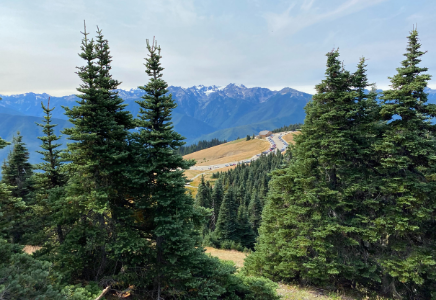
Breathtaking Viewpoints
Hurricane Ridge, Olympic Mountains and ‘hidden’ Mount Olympus in Olympic National Park, approximately 3 hours and 36 minutes from Seabrook.
Olympic National Park Visitor Center, approximately 3 hours and 4 minutes from Seabrook.
Point of Arches (National Natural Landmark) on Shi Shi Beach in Olympic National Park, approximately3 hours and 24 minutes from Seabrook.
Viewing Scenery Olympic National Forest, approximately 2 hours and 9 minutes from Seabrook.
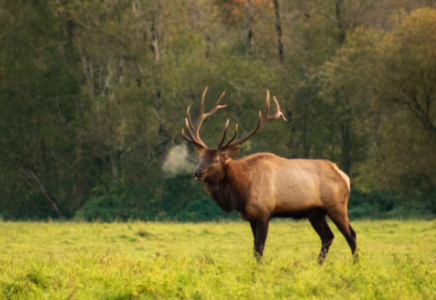
Abundant Wildlife
Grays Harbor National Wildlife Refuge, approximately 36 minutes from Seabrook.
Grays Harbor Shorebird and Nature Festival, approximately 36 minutes from Seabrook.
Great Washington State Birding Trail, varied times depending on your destination. Up to approximately 5 hours and 21 minutes from Seabrook.
Wildlife Viewing Olympic National Forest, varied times depending on your destinations. Up to 4+ hours from Seabrook.
Wildlife Viewing Olympic National Park, varied times, depending on your destinations.
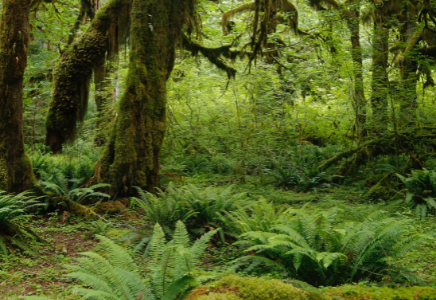
Flourishing Rainforests
Hoh Rain Forest, Queets Rain Forest, Quinault Rain Forest, varied times, depending on your destinations. Up to 2 hours and 10 mins from Seabrook.
Quinault Rainforest Nature Trail, approximately 45 minutes from Seabrook.
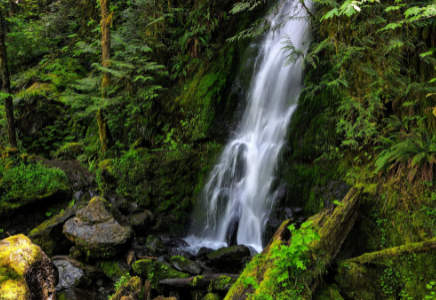
Stunning Waterfalls
6 Enchanting Waterfalls Around Olympic National Park, varied times, depending on your destinations.
Olympic Peninsula Waterfall Trail, varied times, depending on your destinations.
Waterfalls on the Olympic Peninsula Loop, varied times, depending on your destinations.
Olympic Peninsula Loop map
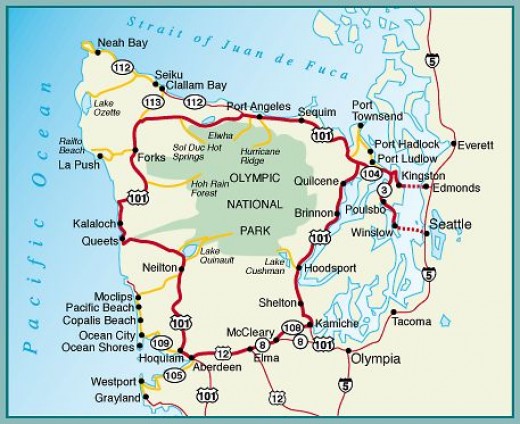
MAKE IT A DAY TRIP
With Seabrook as your adventure launching pad, check out these same-day trips you can take to experience some of the grandest highlights of the Olympic Peninsula. First time in the area or need help planning? Seabrook Hospitality’s Concierge Services is there to help! From helping you put together an itinerary to dozens of services to make a visit to Seabrook more comfortable, concierge services is there every step of the way.
Headed Northeast
What You Can See On A 30-45 Minute Drive From Seabrook
-
Quinault
- Restaurants
- Dino’s Pizza & Grill – 31 Miles | 39 Minutes
- Roosevelt Dining Room – Lake Quinault Lodge – 32 Miles | 45 Minutes
- Salmon House at Rainforest Resort- 33 Miles | 46 Minutes
- Shops
- Lake Quinault Lodge Gift Shop – 32 Miles | 45 Minutes
- Attractions
- Quinault Rain Forest – Trails, Hikes, & Waterfalls – 32 Miles | 42 Minutes
- Rain Forest Nature Trail – 35 Miles | 52 Minutes (Requires A Pass)
- Merriman Falls – 34 Miles | 47 Minutes
- Lake Quinault – 32 Miles | 42 Minutes
- Restaurants
What You Can See On A 1-1.5 Hour Drive From Seabrook
-
Kalaloch
- Restaurants
- Creekside Restaurant – Kalaloch – 61 Miles 1 Hour 10 mins
- Attractions
- Ruby Beach – 74 Miles | 1 Hour 27 Minutes (Requires A Pass)
- Restaurants
-
Hoh Rainforest
- Restaurants
-
Hard Rain Cafe – 88 Miles | 1 Hour 48 Minutes
- Say “Hi” to Harry the Yeti!
-
Benelli’s Burgers
- Drive-In Burger Stand
-
Hard Rain Cafe – 88 Miles | 1 Hour 48 Minutes
- Restaurants
- Three Rivers Resort Restaurant – 105 Miles | 2 Hours 5 Minutes (La Push)
- Coffee Stand
-
Mocha Motion – 95.5 Miles | 1 Hour 54 Minutes
- Great espresso stop right on HWY 101, which also has baked goods.
-
Mocha Motion – 95.5 Miles | 1 Hour 54 Minutes
- Attractions
- Forks Timber Museum – 94 Miles | 1 Hour 50 Minutes
-
Forever Twilight In Forks Collection
- A must see for any Twilight fan. Relatively small exhibition although very impressive collection of memorabilia from the films.
-
John’s Beachcombing Museum – 97.1 Miles | 2 Hours
- See the treasures the ocean brings to our shores!
‘Treasure’ from around the world! Since 1976 the beachcombing museum has built up its exhibits until today where tons of items have been collected off of beaches both local and distant and put on display.
What You Can See On A 2-3 Hour Drive From Seabrook
- Lake Crescent (Requires A Pass)
Lake Crescent At an official maximum depth of 624 feet (190 m) it is officially the second deepest lake in Washington (after Lake Chelan) The lake was formed when glaciers carved out deep valleys during the last Ice Age. Initially, the Lake Crescent valley drained into the Indian Creek valley and then into Elwha River.
- Restaurants
- Lake Crescent Lodge Dining Room – 133 Miles | 2 Hours 42 Minutes
- Attractions
- Marymere Falls Trails
Need A Place To Rest Up Before Adventuring?
Whether you are looking for even more outdoor adventuring in and around town or a place to unwind and reenergize for the next day’s plans, Seabrook offers more than 270 vacation rentals that are open year-round. Pick a cozy cabin that borders the hiking trails, a townhome with an ocean view, a dog-friendly rental, a home with a fireplace or a home with a private hot tub to make the most of your getaway.
10 FACTS TO SHARE
- President Franklin Roosevelt designated the Olympic National Park a national park on June 29, 1938.
- Olympic National Park covers almost one million acres of land (922,650 acres). There are 611 miles of trails, over 3,000 miles of rivers and streams, and more than 650 archaeological sites.
- Olympic National Park became an International Biosphere Reserve in 1976 and designated a UNESCO World Heritage Site in 1981.
- Olympic National Park was almost named Elk National Park due to the importance of saving the Roosevelt elk, named in honor of President Theodore Roosevelt, who created the Mount Olympus National Monument in 1909 to protect the elk from being overhunted and wiped out. By the time the park was named in 1938, the elk population had recovered.
- The Olympic Mountains formed over 30 million years ago. Mount Olympus is the highest point, standing 7,965 feet in the center of Olympic National Park.
- Ruby Beach along the Olympic National Park coastline is called Ruby Beach because of the ruby-like crystals in the beach sand.
- The Quinault Rainforest is in a valley called the “Valley of the Rain Forest Giants” because of the record-sized trees there.
- Hurricane Ridge, a popular spot year-round in Olympic National Park, earns its name from winds 70 mph and higher whipping through.
- The Elwha River was used for hydropower to supply power to local milling operations, but now runs free due to The Elwha River Ecosystem and Fisheries Restoration Act passed in 1992.
- Coast guard stations were established on the beaches of the Olympic Peninsula during World War II because of its highly vulnerable location at the northern tip of the United States.
Sources: Summaries of numerous corroborative websites.
